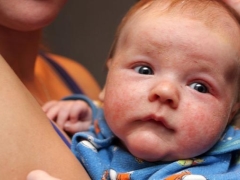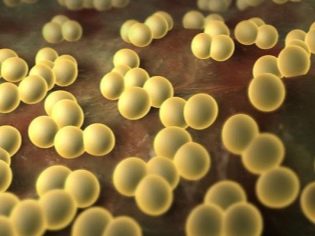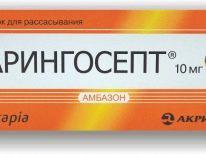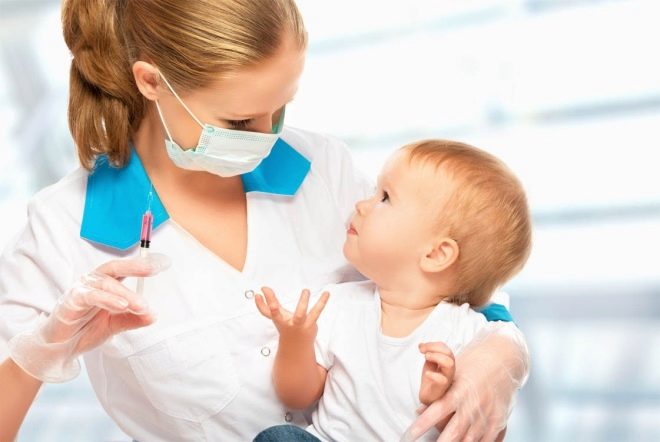Staphylococcus aureus in children
Different staphylococcal flora causes many pathologies in babies. One of the most aggressive causative agents of infectious diseases is Staphylococcus aureus. This article describes what parents should raise about these dangerous germs.
What it is?
In the external environment that surrounds the human body, there is a huge amount of the most diverse microbes. Staphylococci are fairly frequent neighbors. Currently, scientists have established more than twenty different types of these microorganisms, however, only three of them are capable of developing the disease. Staphylococcus aureus is the most dangerous and aggressive.
The causative agents of staphylococcal infection were discovered many years ago, almost at the end of the XIX century. These microbes got their name not by chance. While looking at microorganisms in a microscope, they look like a bunch of yellow grapes.
It causes a variety of infections in babies. Both the baby and the teenager can get sick.
Doctors also call this microbe staphylococcus aureus or in a shortened version of S. aureus. The short name is written, as a rule, in laboratory tests. This microbe has a whole arsenal of factors that can lead to the development of diseases in babies. These aggressive components include hemolysins. These substances can have a destructive effect on red blood cells and leukocyte blood cells.
On the surface of the cell wall of microbes contains a certain set of antigen receptors. It is they that cause a violent activation of the immune system when microorganisms enter the children's body.
If a child has already had a Staphylococcal infection, he may still have immunity to it. This is possible in the case when the immune system works as efficiently as possible, without failures and disorders.
It should be noted that microbes can be for quite a long time in adverse environmental conditions. This feature is due to their dense cell wall, protecting them from external factors. Prolonged exposure to temperature does not have a destructive effect on staphylococcus In order to neutralize them, long-term drying is necessary, which is carried out for more than 10-12 hours.
These microorganisms are quite "cleverly arranged." They have enormous potential for deviations from the immune response and are able to adapt well to the effects of certain antibacterial agents on them. This is largely due to the rapid development of antibiotic resistance in the human population. Improper treatment and excessively rapid drug withdrawal rather quickly lead to bacteria adapt well to the action of various drugs and retain their viability during therapy.
How is it transmitted?
Staphylococcus aureus is extremely contagious. They can be easily infected from a person who is a carrier of the infection, and especially from an already ill individual. Contact-household method of infection in this case is quite common. If purulent wounds or formations appear on the skin of a sick child, then with direct contact the risk of infection of a healthy baby increases several times.
Not always the carrier of the infection can be detected. Many people are hidden carriers of the disease and do not even know it. This is due to the fact that the disease in them occurs in a latent or hidden form. This variant of the disease is mainly found in a person who has fairly good performance of the immune system. However, the source of the disease, he still is from him and you can also easily get infected.
Both boys and girls can become infected with Staphylococcus aureus. Mass outbreaks are quite often recorded. In this case, the kids get infected from each other when they visit educational institutions or leisure circles. Airborne infection is also possible. Bacteria easily get from the mucous membranes of a sick child to a healthy one.
There is also an intrauterine infection. It is certainly more relevant for newborns and infants. Infection in this case occurs during the intrauterine development of the future baby. Bacteria, having a small size, can quickly spread through the bloodstream to placenta, reaching the body of the fetus.
In this case, the first adverse symptoms of the disease appear already, as a rule, in a newborn baby.
Symptoms
The incubation period for a staph infection may be different. Its duration is influenced in many respects by the individual condition of the child at the time of infection. According to statistics, the first symptoms of this infection appear in babies. 3-6 hours from the moment the bacteria enters the body. In some cases, the incubation period of this disease may be several days.
Staphylococcus aureus has no favorite localizations. The peculiarity of these microorganisms is that they perfectly survive in any conditions. Detect these microbes during illness can be in a variety of internal organs. This polymorphism is due to the fact that the bacteria quickly spread through the bloodstream and fall into different anatomical zones. Once in the internal organs, they contribute to the development of pronounced inflammation in them, which leads to disruption of functioning.
Quite frequent localization of this bacterial process - the skin. Staphylococcus aureus can cause a variety of clinical signs and manifestations of the disease on the skin.
They are usually manifested by various folliculitis, dermatitis, bacterial ulcers, furunculosis. The skin becomes bright red. When you touch them, the increased temperature of the skin is determined.
Some clinical forms of the disease, occurring with the formation of purulent-necrotic elements, are accompanied by the appearance of ulcers on the skin. They can be of different size and shape. Typically, in length, such formations reach several centimeters. This variant of staphylococcus can cause both local and common variants of the disease.
In infants aged 2–3 years old, who still have an insufficiently functioning immune system, the course of an infectious pathology can be quite severe. Also, the disease is severe and in newborn babies. The peculiarity of the structure of the skin and subcutaneous tissue contributes to the appearance in infants of infancy common or generalized forms of infectious disease.
In some cases, the child appears local purulent rashes, which are localized on the face. They are quite common in adolescence. To eliminate these skin manifestations it is often not enough just to take cosmetic care with the use of special cosmetics. In order to eliminate purulent elements from the face, in some cases, an appointment is required. antibacterial drugs.
Lesions of the gastrointestinal tract are also quite common in this infection.They are characterized by various disorders, mainly arising from intestinal dysbacteriosis.
This is manifested by the appearance in the child of various problems associated with the act of defecation. A sick baby often develop persistent constipation. In some cases, severe diarrhea develops.
Abdominal tenderness occurs in 60% of babies.who become ill with a staph infection. The severity of the intensity of pain syndrome may be different. Severe flow is accompanied by severe pain, which may increase after eating. Some babies have an appetite disturbance. Sick babies may refuse breastfeeding.
The mucous membranes of the respiratory tract are the entrance gate for entry of Staphylococcus aureus into the children's organism. Getting into the nasal passages, microbes cause the development of a rather pronounced rhinitis in a baby. The rapid spread of infection to adjacent organs contributes to their rapid involvement in the inflammatory process. A couple of days after the sick baby has a head cold, it also has characteristic changes in the throat and oropharynx.
Visible mucous membranes become bright red, and in some cases even acquire a "glowing" color. The tongue is coated with gray or yellow-green bloom. With the development of bacterial stomatitis, severe inflammation appears around the tooth holes. Acute staphylococcal tonsillitis is accompanied by the appearance of a large amount of plaque that covers the entire outer surface of the tonsils.
Inflamed palatine arches hanging over the entrance to the larynx. These specific and vivid manifestations can be identified independently. To do this, Mom should be armed with a teaspoon or a wooden spatula, which is sold in any pharmacy. Detection of signs of infection should be for caring parents a significant reason for seeking medical attention. To treat a staph infection on your own at home doctors categorically do not recommend, as this can only lead to a worsening of the course of the disease and increase the risk of possible complications.
How to identify?
An exact diagnosis of a staph infection caused by Staphylococcus aureus can be made only by additional laboratory tests. These studies are necessary to distinguish between normal and pathological. Detect pathogens can be in a variety of biological materials. Quite often they are detected in the blood, in the feces, urine and secretions secreted from the throat and nasopharynx.
Analysis of dysbacteriosis held for all babies with symptoms of damage to the organs of the gastrointestinal tract. This study helps to establish the degree of involvement in the pathological process of beneficial microflora, which normally should be present in every healthy baby.
A significant disadvantage of this study is the duration. It takes several days to get the result, and in some cases a week or more.
To assess the severity of functional impairment, a series of biochemical studies are carried out to determine how affected vital organs are. Instrumental diagnostic methods, such as radiography of the lungs or ultrasound examination of the abdominal cavity and kidneys, are performed only in exceptional cases when it is necessary to rule out any complications or exacerbations of concomitant chronic pathologies.
Treatment
Therapy of staphylococcal pathologies caused by Staphylococcus aureus is carried out taking into account their localization. A staph infection without treatment can be extremely dangerous. The basis of therapy is the prescription of antibacterial drugs.
The duration of antibiotic prescription is determined by the severity of the underlying disease, as well as the severity of adverse symptoms of the disease.The treatment regimen is usually calculated for 7-14 days.
In case of severe disease, the use of drugs may be longer.
Frequency and dosage of drugs are calculated by the attending physician based on the child's age and weight, as well as the presence in the baby of concomitant diseases of internal organs that may affect the establishment of the necessary course dose. Certain groups of antibiotics have a destructive effect on staphylococcal flora. These include: clavulanic acid-protected penicillins, as well as 3rd and 4th cephalosporin drugs. The latest generation of antibacterial agents included in the reserve group is used extremely rarely - only in case of a very severe course of the infectious process and the absence of the effect of the previous treatment.
Symptomatic therapy includes the appointment of anti-inflammatory drugs. These medicines help reduce the symptoms of severe intoxication. As antipyretic drugs are prescribed funds based on paracetamol or ibuprofen. They are appointed, as a rule, when the body temperature rises above 38 degrees. Reception of these means helps to eliminate febrile, as a rule, in 1-3 days.
To eliminate pain in throat for staphylococcal pharyngitis or acute bacterial tonsillitis local action. In children's practice, successfully used drugs in the form of lozenges. They are assigned to children older than three years. The baby should be well aware that you can not swallow them, but you need to hold it in your mouth until it is completely absorbed. «Faringosept», «Strepsils"," Grammydin " and other drugs have a pronounced antiseptic effect and help eliminate pain when swallowing.
Treatment of local skin forms of the disease, which are characterized by the appearance of purulent formations on the skin, is carried out in a pediatric surgeon. The doctor conducts an autopsy of these elements, followed by the appointment of a course of antibiotic therapy. In some cases, surgery is also required for the treatment of purulent formations in the abdominal cavity caused by Staphylococcus aureus.
Bacteriophages are another possible mechanism for the treatment of staphylococcal infections. These microorganisms are designed to effectively deal with staphylococci. The use of bacteriophages is widely used in pediatric practice. These drugs have a minimum of side effects and in many cases cause much less possible effects than antibiotics.
The decision on the choice of bacteriophages or antibacterial drugs remains for the attending physician. The treatment tactics in this case must be coordinated with the parents.
When are vaccinations done?
To date, unfortunately, specific prevention of Staphylococcus aureus has not been developed. However, there are modern drugs that are called vaccinations against staph infection. Quite often it misleads parents. Such anti-staphylococcal vaccinations are carried out with a therapeutic, and not with a preventive purpose. The decision on the need to apply this method of therapy in a particular baby remains for the attending physician.
These drugs are most effective for generalized skin manifestations of staphylococcal infection. Severe disease can also be an indication for this type of therapy. The introduction of specific drugs helps to improve the well-being of the child, as well as contribute to the speedy recovery of a sick baby from a staphylococcal infection.
All about staphylococcus in children, symptoms and treatment, see the next video.






































